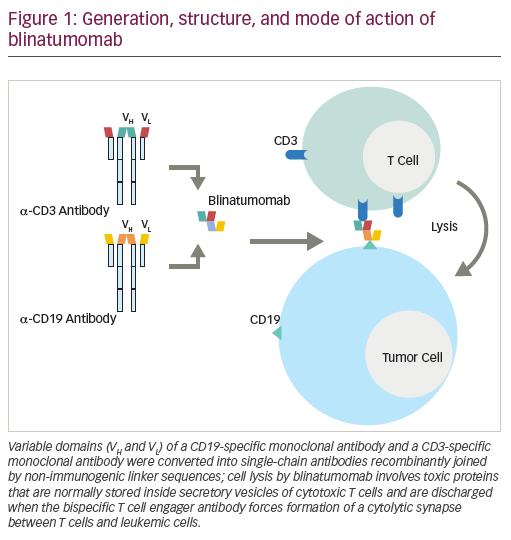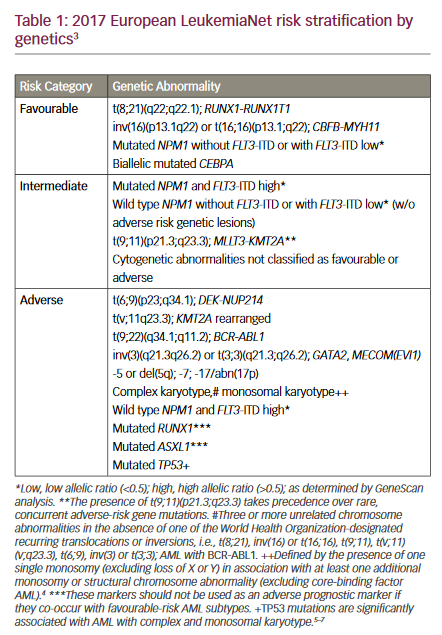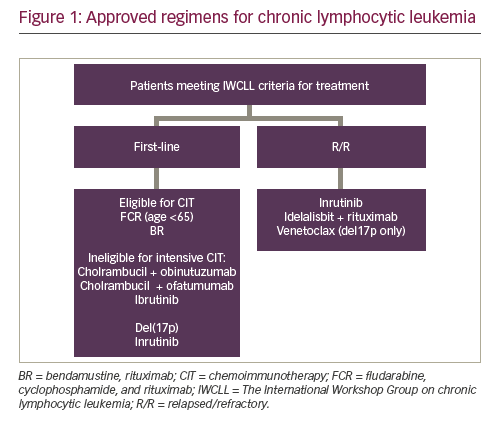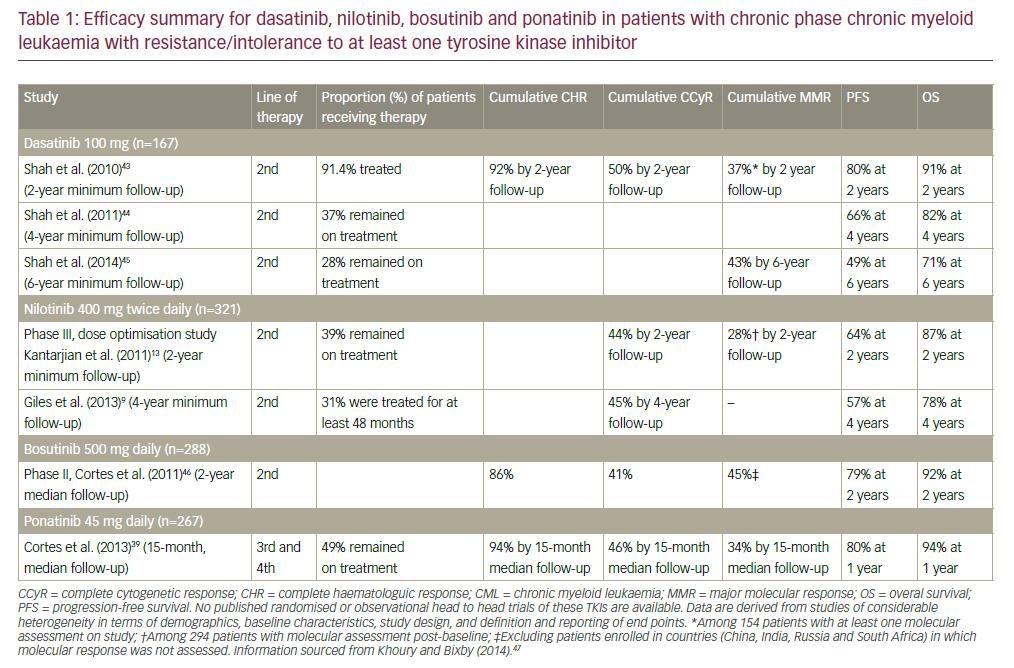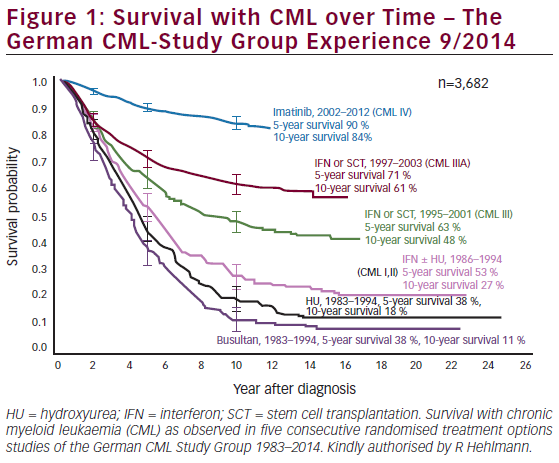Chronic lymphocytic leukaemia (CLL) is the most common adult leukaemia1 and predominantly affects older people, with a median age of onset of 72 years.2 As well as being frailer, elderly patients are more likely than younger patients to have co-morbid conditions. In the US National Institute on Aging/National Cancer Institute study, the mean number of co-morbidities in patients increased proportionately with age. Cancer patients aged 55–64 years had 2.9 co-morbidities, rising to 3.6 for those aged 65–74 years and 4.2 for those aged over 75 years.3 Since frailty and co-morbid conditions both complicate the treatment of CLL, it would seem prudent to investigate treatments for this disease in sufficiently elderly patient groups. However, to date, the majority of trials in CLL have been conducted in cohorts of patients considerably younger than the median age of onset for CLL, resulting in a paucity of data in the older age group.4,5 Furthermore, there is typically a delay between the diagnosis of CLL and the first treatment, meaning that patients often receive their first treatment in the middle of their seventh decade.5 The primary clinical needs of unfit patients remain unmet. This subgroup of patients, under-represented in clinical trials, carries the main burden of CLL and will progressively increase in future years.
This article aims to address some of the issues associated with the treatment of elderly and/or unfit patients with CLL, including the shortcomings of current standard treatment options. Recent data will be reviewed, as well as ongoing clinical trials that could help further improve the first-line management of CLL. Finally, the need for a simple-to-use scale to measure fitness and co-morbidities in CLL patients will be discussed.
Current First-line Treatments
Fludarabine-based Regimens
The combination of fludarabine–cyclophosphamide–rituximab (FCR) (rituximab being an anti-CD20 monoclonal antibody) has recently become the first-line treatment of choice for fit patients with CLL. In a large Phase III randomised trial (CLL8) conducted by the German CLL Study Group (GCLLSG), FCR demonstrated some of the highest remission rates ever reported in previously untreated CLL patients.6 The overall response rate (ORR) (90 % versus 80 %, p<0.0001) and complete response (CR) rate (44 % versus 22 %, p<0.0001) were significantly higher with FCR than with fludarabine plus cyclophosphamide (FC). In this trial, the CR rate was determined using immunophenotyping of the peripheral blood and bone marrow, a technique more sensitive than the morphological assessments (cytology plus histology) used to determine the CR rate in other clinical trials. The lack of standardisation of the methods used to assess CR rates in the clinical trials conducted to date makes it difficult to draw conclusions regarding the relative efficacy of CLL therapies as measured by CR rates. In the CLL8 trial, the progression-free survival (PFS) rate at three years was also significantly higher with FCR than with FC alone (65 % versus 45 %, hazard ratio [HR] 0.56, 95 % confidence interval [CI] 0.46–0.69, p<0.0001). In addition, the overall survival (OS) rate at three years was significantly higher with FCR than with FC alone (87 % versus 83 %, HR 0.67, 95 % CI 0.48–0.92, p=0.012).6 Response rates to treatment with FCR were similar in patients aged <65 years (89 %) and in patients aged ≥65 years (93 %) – but only 11 % of the patients were aged >70 years. The authors concluded that FCR may change the natural course of CLL.6 Interestingly, a sub-analysis of CLL8 trial data showed that patients who achieved minimal residual disease (MRD) negativity had significantly prolonged PFS compared with those who did not achieve MRD negativity.7 A similar trend was seen for peripheral blood or bone marrow MRD, and the benefits in terms of MRD were independent of treatment regimen.7
Unfortunately, fludarabine-based regimens are associated with a high level of toxicity and there are a number of contraindications and precautions linked with the use of this agent. In the CLL8 trial, grade 3/4 neutropenia was reported in up to 34 % of patients who received FCR and 21 % of patients who received FC.6 Furthermore, according to the prescribing information, fludarabine should be used with caution (i.e., with close monitoring) and at a dose reduced by up to 50 % in patients with mild or moderate renal impairment (creatinine clearance [CrCl] 30–70 ml/min). Fludarabine is also contraindicated in patients with a CrCl <30 ml/min.8 It should be used with caution in patients with an impaired state of health, especially those with severe impairment of bone marrow function, immunodeficiency or a history of opportunistic infections, or with a positive antiglobulin test.8,9 As already noted, elderly CLL patients typically have a number of co-morbidities, thus the usefulness of fludarabine in these patients is limited.
Chlorambucil
The alkylating agent chlorambucil has been the traditional treatment of choice in elderly and/or unfit CLL patients. It has been shown to have similar efficacy to more aggressive chemotherapy regimens in this patient group, can be given orally and has a favourable side-effect profile.10 However, there are also a number of issues with the use of chlorambucil. First, responses can be slow and better outcomes have been reported with prolonged therapy, as seen in the UK CLL3 trial11 when comparing results after 12 months versus six months of therapy. Second, although it is important to achieve the correct chlorambucil dose intensity to obtain the best outcome, there appears to be no clear guidance or consensus on what the optimal dose intensity should be. For example, an ORR of 37 % was achieved with 40 mg/m2 chlorambucil every 28 days in one study, compared with an ORR of 72 % at a higher dosage of 70 mg/m2 every 28 days in another study conducted in a similar patient population.12,13 Finally, although relatively high ORRs may be achieved with chlorambucil, the number of patients achieving CR has been consistently low, ranging from 0 % in one recent study14 to 7 % in another.13 This is of importance because, in some studies, the CR rate has been associated with longer PFS.15
Fludarabine and chlorambucil have been compared head-to-head as first-line monotherapies for CLL in patients aged 65–80 years.14 Fludarabine was associated with significant improvements in ORR (72 % versus 51 %, p=0.003) and CR (7 % versus 0 %, p=0.011) compared with chlorambucil. However, there was no significant difference between fludarabine and chlorambucil in terms of PFS (19 months versus 18 months, respectively, p=0.7) or OS (46 months versus 64 months, respectively, p=0.15). Furthermore, fludarabine was significantly more myelotoxic than chlorambucil. Thus, for the elderly CLL patient ineligible for FCR, the traditional treatment options are chlorambucil, which is associated with suboptimal efficacy, or fludarabine monotherapy, which is associated with suboptimal efficacy and significant toxicity. There is therefore a need for improved treatment options for elderly and/or co-morbid patients ineligible for FCR.
Bendamustine
Bendamustine – a relatively recent entrant into the international CLL treatment arena – may be an attractive choice for the treatment of the majority of CLL patients, who are neither fit (go go) nor unfit (no go). Bendamustine was rationally designed to combine the properties of an alkylating agent and a purine antimetabolite. It has structural similarity to chlorambucil and other drugs from the nitrogen mustard class, and contains a benzimidazole ring, which may act as an antagonist to purines and amino acids.10 It was first discovered in the 1960s, but its use was restricted to Germany until 1992.10 It has now been licensed in the US and in several European countries for the first-line treatment of CLL (Binet stage B or C) in patients for whom fludarabine combination chemotherapy is not appropriate. Bendamustine has been shown to have a unique mechanism of action compared with structurally related chemotherapeutics, such as chlorambucil and cyclophosphamide.10 It is a potent activator of the p53-dependent apoptosis pathway.10 In contrast to other related chemotherapeutic agents, bendamustine induces the base excision DNA repair pathway, rather than the alkyltransferase pathway.10 In addition, bendamustine stimulates apoptosis-independent mitotic catastrophe and may therefore be able to induce cell death in malignancies rendered resistant to apoptosis as a result of prior chemotherapy.10 Bendamustine also induces more extensive double-stranded DNA breaks in cancer cell lines than related nitrogen mustard-containing chemotherapeutics.10 Furthermore, the double-stranded DNA breaks induced by bendamustine take longer to repair than those caused by related chemotherapeutic agents.10
Bendamustine was licensed in the US and Europe based on the results of a pivotal Phase III, open-label trial comparing it with chlorambucil for the first-line treatment of CLL.15 The trial included 319 patients aged ≤75 years with previously untreated advanced (Binet stage B or C) CLL and an Eastern Cooperative Oncology Group (ECOG) performance status of 0–2. In total, 162 patients were randomised to receive up to six cycles of bendamustine and 157 were randomised to receive chlorambucil. Bendamustine was given intravenously at 100 mg/m2/day on days 1 and 2, and chlorambucil was given orally at 0.8 mg/kg (Broca’s normal weight) on days 1 and 15 of each cycle.
Bendamustine was superior to chlorambucil for most of the efficacy measures investigated. The ORR was significantly higher with bendamustine than with chlorambucil (68 % versus 31 %, p<0.0001).15 Similarly, the CR rate was significantly higher with bendamustine than with chlorambucil (31 % versus 2 %),16 and a higher proportion of patients achieved a nodular partial response (nPR) (11 % versus 3 %).15 In this trial, the CR rate was determined by morphological bone marrow assessments (cytology and histology), rather than by the more sensitive immunophenotyping assessments such as those used in the FC versus FCR trial.6 The median PFS with bendamustine was significantly longer than with chlorambucil (21.6 months versus 8.3 months, p<0.0001) (see Figure 1). Furthermore, the PFS benefit of bendamustine over chlorambucil was evident in subsets of patients with Binet stage B or C disease.15 Bendamustine also appeared to be similarly effective in patients aged <65 years or ≥65 years in terms of the median PFS.16 The median duration of response in patients achieving CR (29.3 months versus 8.0 months) or partial response (PR) (17.4 months versus 8.0 months) was longer with bendamustine than with chlorambucil.15
Both treatments were well tolerated, although there were more adverse events, including more haematological adverse events, with bendamustine than with chlorambucil. The overall incidences of neutropenia (27 % versus 14 %), thrombocytopenia (25 % versus 21 %) and anaemia (22 % versus 14 %) were higher with bendamustine than with chlorambucil.15 Gastrointestinal events of any grade also occurred more frequently with bendamustine than with chlorambucil (nausea 19 % versus 14 %; vomiting 16 % versus 7 %; and diarrhoea 10 % versus 4 %).14 Consequently, the use of an antiemetic therapy was greater in the bendamustine group than in the chlorambucil group (36 % versus 4 %).15
A longer-term follow-up analysis demonstrated that the ‘time to next treatment’ (TTNT) was significantly longer for bendamustine than for chlorambucil (31.5 months versus 10.1, p<0.0001).17 The TTNT measure is particularly meaningful to patients because it relates to how frequently they have to undergo potentially toxic and unpleasant treatments. After a median follow-up of 54 months, there was no difference in OS between the two groups (p=0.24, HR 1.3 in favour of bendamustine).17 However, patients who achieved CR (the vast majority of whom had received bendamustine) also experienced a significantly prolonged OS in comparison with those who did not achieve CR (median not reached versus 76.2 months, p=0.002).17 Importantly, the efficacy benefits of bendamustine over chlorambucil were achieved without compromising the patients’ quality of life, according to a survey conducted among the patients.17 This trial demonstrated the superiority of bendamustine over chlorambucil using a carefully selected and relatively high dose intensity of chlorambucil.15
Furthermore, the response rate achieved with chlorambucil was similar to that achieved in another contemporary trial.12 However, since chlorambucil may have a delayed action, requiring up to 12 months of use for maximum efficacy, the dose and duration (six months) of chlorambucil treatment in this trial may have been suboptimal. Alternatively, the low response rates with chlorambucil reported in this trial could reflect the fact that a blinded response assessment was conducted by an independent review committee, unlike other previous CLL trials in which the response to treatment was assessed by investigators – such independent assessments typically result in lower estimates of the response rate than investigator-lead assessments.
In addition to its superiority over chlorambucil, bendamustine is also considered cost-effective, according to the results of a robust health economic model recently appraised in an independent health technology assessment. The assessment, which was conducted for the UK’s National Institute for Health and Clinical Excellence (NICE), found bendamustine to be a cost-effective option for the first-line treatment of CLL, at a cost of £9,400 per quality-adjusted life year (QALY).18 This QALY value is substantially lower than the NICE-defined threshold for cost-effectiveness of £20,000–30,000 per QALY.19
In contrast to fludarabine, bendamustine is suitable for use in patients with renal impairment without dose adjustment. In a study of patients with multiple myeloma, the plasma pharmacokinetic profile of bendamustine was not significantly different between patients with normal renal function and those with impaired renal function or dependence on dialysis.20 This could be a substantial advantage for the treatment of elderly patients, as renal function is known to decline with age. Furthermore, patients may have a better immunological status when treated with bendamustine because clinical observations have shown that CD4+ T-cell decreases appear to be less frequent than with fludarabine treatment.
Remaining Questions Regarding Bendamustine
A few questions remain regarding bendamustine-containing regimens. As yet, there is a lack of long-term tolerability data with the agent, particularly in very elderly and/or co-morbid patients.4 There is also a question as to whether bendamustine will be associated with an increased incidence of secondary malignancies compared with other standard chemotherapies – there are presently no long-term data available. In the pivotal Phase III trial, there was only one case of a new malignancy – a new bronchial carcinoma detected 12 months after the patient had received bendamustine treatment.15 Currently, there is no detailed information to evidence if stem cells can be harvested effectively from CLL patients after treatment with a bendamustine-containing regimen, and whether the outcomes after subsequent stem cell transplantation would be affected. This will be a subject for future research.
Future Developments in First-line Treatments
Bendamustine in Combination with Rituximab
A potential future option for the first-line treatment of CLL is the combination of bendamustine and rituximab (BR). However, it should be noted that this combination is still experimental and has only been evaluated in relatively young (median age 64 years) and fit (go go) patients. In a Phase II study of 117 patients with untreated CLL, patients received 90 mg/m2 bendamustine on days 1 and 2 with 375 mg/m2 rituximab for the first cycle and 500 mg/m2 for subsequent cycles. The ORR and CR rate were 90.9 % and 32.7 %, respectively, as determined by morphological response assessments – which may result in higher response estimates than the more sensitive immunophenotyping response assessments.21 BR induced durable responses, with 75.8 % of patients still in remission after 18 months, and relatively high MRD rates (58 % in blood and 28 % in bone marrow).21 In addition, it was well tolerated. The majority of the experience with BR to date has occurred in real-world clinical practice in Germany.
Use of Bendamustine Regimens in a German Registry
Despite the lack of randomised trial data, BR is the most frequently used regimen in Germany, according to a registry of lymphatic neoplasias. Preliminary results from that registry show that over 30 % of CLL patients receive BR as first-line treatment and nearly 50 % of CLL patients who require second-line therapy also receive it. For first-line treatment, approximately 47 % of CLL patients received a bendamustine-based regimen, 41 % received a fludarabine-based regimen and 12 % received another regimen (mostly chlorambucil). As may be expected, the patients receiving bendamustine-based regimens were older and had slightly worse Charlson scores than those receiving fludarabine-based regimens (72 years versus 67 years and 0.8 versus 0.5, respectively). In turn, patients receiving bendamustine-based regimens were younger than patients receiving chlorambucil (74.5 years and Charlson score of 1.2) (Wolfgang Knauf, personal communication).
Chlorambucil in Combination with Rituximab
Two non-comparative studies have investigated the combination of chlorambucil and rituximab. In one study of 100 previously untreated patients of median age 70 years who required therapy,22 each patient who received chlorambucil plus rituximab was matched with two patients treated with chlorambucil from the previously conducted UK Leukaemia Research Fund CLL4 trial13 as historical controls. Patients were matched according to Binet stage (B or C), variable heavy chain gene mutation status (mutated or unmutated), chromosome 11q fluorescence in situ hybridisation (deleted or not) and age.22 The ORR was 82 % and the CR rate was 9 % with chlorambucil plus rituximab. Chlorambucil plus rituximab was also associated with 15 % nPR and 58 % PR rates and a median PFS of 23.5 months. The ORR was 16 % higher with chlorambucil plus rituximab than with chlorambucil monotherapy in the matched historical control patients. Although 92 % of patients experienced at least one adverse event with chlorambucil plus rituximab, the majority of events were grade 1/2. Grade 3/4 neutropenia occurred in 39 % of patients and serious adverse events occurred in 37 % of patients.22
In the other study, chlorambucil plus rituximab was evaluated in 97 elderly patients with previously untreated CLL who required therapy.23 According to the study design, patients who responded to treatment would then be randomised to receive rituximab maintenance or observation only. The first 54 evaluable patients were included in an interim analysis. The median age of these patients was 70.5 years and 25.9 % had Binet stage A, 57.4 % Binet stage B and 16.7 % Binet stage C disease. At the end of the induction phase, the ORR with chlorambucil and rituximab was 81.4 %, with 16.7 % of patients achieving CR. A further 3.7 % of patients had incomplete CR, while the nPR and PR rates were 1.9 % and 59.3 %, respectively. Eight of nine patients with CR who were evaluated were MRD-positive. In total, 85.1 % of patients completed the planned course of treatment and the most common adverse events were neutropenia (31.5 %) and thrombocytopenia (14.8 %). The incidence of grade 3/4 neutropenia was 16.7 %; there were no grade 3/4 infections.
Fludarabine–Cyclophosphamide–Rituximab-lite
FCR-lite is a regimen comprising a reduced dose of fludarabine plus cyclophosphamide plus an increased dose of rituximab, in an attempt to achieve the efficacy of the standard of care (SOC) FCR regimen but with improved tolerability (notably reduced haematological toxicity). Striking efficacy was reported in a recent single-arm study with FCR-lite followed by rituximab maintenance therapy in 50 untreated CLL patients, with a 100 % ORR and 77 % CR rate.24 Furthermore, remissions were durable in all but one patient with CR – patients remained in remission at a median follow-up of 2.4 years.24 However, the median age of patients recruited into this trial was 58 years and the majority of patients were Rai stage I and II.24 In addition, FCR-lite has yet to be evaluated in a randomised clinical trial in elderly CLL patients ineligible for FCR.24
Ongoing Trials in First-line Treatments
There are a number of ongoing trials that are likely to influence the way unfit (no go) and/or elderly patients with CLL will be treated in future (some of which are summarised in Table 1).
The Study of MabThera (rituximab) added to bendamustine or chlorambucil in patients with chronic lymphocytic leukemia (MaBLe) is comparing BR with chlorambucil plus rituximab.25 This trial is being conducted in patients who are ineligible for treatment with fludarabine and includes both treatment-naive and second-line patients; the results are expected in 2014. The GCLLSG CLL11 study26 compares chlorambucil monotherapy with chlorambucil plus rituximab; a third group is being treated with chlorambucil plus GA101, a novel humanised glyco-engineered anti-CD20 monoclonal antibody.27 As well as determining the efficacy and safety of this new agent, this well conducted randomised controlled trial will show how chlorambucil plus rituximab compares with chlorambucil alone.
The Phase III Study of the effectiveness & safety of lenalidomide versus chlorambucil as first-line therapy for elderly patients with B-cell CLL (ORIGIN trial), which is currently recruiting, is evaluating chlorambucil versus lenalidomide as first-line therapy in elderly (i.e., ≥65 years) patients with CLL.28 The primary endpoint is PFS and the trial is due to end in 2013.
Using a ‘pick the winner’ design, a future French intergroup trial, the Groupe ouest est leucemies aigues myeloblastiques (GOELAM) [West–East acute myeloblastic leukaemias group] trial, due to start in March 2012, will evaluate five therapies in previously untreated patients >65 years, with co-morbidities as defined by a Cumulative Illness Rating Scale (CIRS) score >6 and <10. This trial will involve 140 patients and will compare chlorambucil alone with ofatumumab (a fully human anti-CD20 monoclonal antibody) alone, fludarabine plus ofatumumab, bendamustine plus ofatumumab, and FC-lite, in an attempt to gauge which is the best first-line regimen.
Finally, two trials are ongoing with ofatumumab. The ofatumumab plus chlorambucil vs chlorambucil monotherapy in previously untreated patients with CLL (COMPLEMENT-1) trial is comparing chlorambucil monotherapy with chlorambucil plus ofatumumab in previously untreated patients who are considered inappropriate for fludarabine-based therapy.29 The trial has completed recruitment and is expected to report data in 2013.
Following on from the COMPLEMENT-1 trial, the Randomised investigation of alternative ofatumumab-based regimens for less fit patients with CLL (RIAltO) will compare ofatumumab plus chlorambucil with ofatumumab plus bendamustine in patients not considered fit enough for FCR.30 This trial will begin enrolling shortly. Thus, over the next few years, we should have high-quality, reliable results from clinical trials demonstrating the relative efficacy and safety of a variety of novel combination regimens in elderly, co-morbid and previously untreated patients with CLL.
Improving Patient Selection and Treatment Choices – Fitness and Co-morbidity Scales
At one end of the CLL patient spectrum, it is clear that FCR is an effective treatment option to induce MRD and improve OS in the fit (go go) patients. At the other end of the CLL patient spectrum, best supportive care (BSC) is appropriate for the control and palliation of symptoms in unfit (no go) patients (see Figure 2). However, questions remain about which treatment is the most appropriate for patients between these two extremes (slow go), as well as how physicians should identify/categorise these patients.5 There is also uncertainty as to whether the goals of treatment should be the same for this group of patients than for their fitter counterparts. For example, is MRD negativity a realistic treatment goal?
What is currently lacking from routine clinical practice is a simple tool for accurately gauging fitness and co-morbidity to facilitate optimal treatment decision-making for the majority of CLL patients, who lie between the extremes of the fit and the unfit. The rationale for including a sub-group zone of ‘not so slow go’ patients (see Figure 2) results from our clinical observations that a proportion of ‘slow go’ patients are able to tolerate stronger treatments to achieve improved CR and prolonged PFS. In a recent survey conducted at the European Hematology Association (EHA) Annual Meeting 2011, 65 % of haemato-oncologists confirmed that they used their clinical judgement alone to gauge a patient’s fitness and suitability for a particular treatment regimen.
In an attempt to improve clinical judgement and make the treatment of the majority of CLL patients more consistent and systematic, a number of scales have been investigated. The GCLLSG has adopted the CIRS to distinguish between physically fit and unfit patients.31 The scale is divided into three groups:
- ‘go-go’ patients, who are independent, have no co-morbidity, have a normal life expectancy and are considered suitable for treatment with FCR;
- ‘no-go’ patients, who are severely handicapped, with a high level of co-morbidities and reduced life expectancy – these patients would typically receive best supportive care for palliation of their symptoms; and
- in between the two preceding groups lies the ‘slow go’ patient cohort who present with some co-morbidities, impaired organ function and reduced performance status. However the patients within this large cohort are extremely heterogeneous. The approach to treatment therefore should be further sub-divided in order to tailor therapy. Currently the European Society for Medical Oncology (ESMO) suggests chlorambucil as the SOC for ‘slow go’ patients, however as mentioned earlier we have observed that a proportion of these patients are able to tolerate a stronger therapy regime such as bendamustine. In addition we postulate that there exists a proportion of ‘go go’ patients that would benefit from bendamustine, as an alternative to FCR. We have therefore indicated a ‘twilight zone’ in Figure 2, denoted by a grey rectangle, which we propose to represent ‘not so go go’ and ‘not so slow go’ patients for whom therapy could be improved.5,31,32
For the aforementioned reasons, we propose that sub-groups (‘not so go go’ and ‘not so slow go’) are adopted to provide a tailor-made approach to treatment selection for the individual patient. A version of the CIRS modified for geriatric patients (CIRS-G) may be another useful measure of fitness in elderly CLL patients.33
Another useful method of classifying co-morbid conditions is the Charlson score, a weighted index that takes into account the number and severity of co-morbid diseases.34 It is a simple method that accurately estimates the risk of death from co-morbid diseases, and so may be particularly useful in the CLL setting, although it was originally developed for solid tumour patients with leukaemia being one of the listed co-morbidity items.
What is clear is that any method of measuring fitness in CLL patients must be simple and easy to use in clinical practice. In the survey of haemato-oncologists conducted at the EHA 2011 Annual Meeting, 53 % thought that a validated CLL patient fitness scale was necessary, but said they would only use it if it was simple.
However, we have to keep in mind that the elderly patient population is very heterogeneous, and that the evaluation of co-morbidities is only a part of the geriatric assessment, which should also take into account function, cognition, psychological state, social activity and/or support and nutritional status. This is the reason why, for some patients, a collaboration with geriatricians is useful to ensure an accurate evaluation of their health status and/or life expectancy.
Conclusions
Well-tolerated and effective treatment options are urgently needed for the majority of CLL patients classified as ‘slow go’ by CIRS, who fall between those fit enough to receive FCR and those who receive BSC.5 A large Phase III trial has shown that bendamustine is a well-tolerated and more effective option than chlorambucil in previously untreated CLL patients. Bendamustine was superior to chlorambucil in terms of efficacy and had a manageable tolerability profile.15 It is for these reasons that we propose the cohort termed ‘not so slow go’ be incorporated into the CIRS. Based upon clinical observations we also propose a cohort termed ‘not so go go’ is more appropriate for patients who would benefit from a regimen less aggressive than FCR.
Data from registries and clinical trials also suggest that bendamustine, as part of a chemoimmunotherapy combination, may be an attractive treatment option in elderly patients with CLL. Bendamustine may also prove to be the chemotherapeutic platform of choice upon which to build novel chemoimmunotherapy combination regimens in the future. The combination of bendamustine with rituximab,21 and FCR-lite24 have demonstrated very high response rates as first-line treatment for CLL, but they have yet to be evaluated in elderly and co-morbid patients ineligible for FCR. Chlorambucil plus rituximab is associated with a high ORR but relatively low CR rate. Ongoing trials are evaluating several different regimens in elderly, untreated CLL patients ineligible for FCR, including BR, bendamustine plus ofatumumab, chlorambucil plus GA101 (a humanised anti-CD20 monoclonal antibody) or ofatumumab, chlorambucil plus rituximab, fludarabine plus ofatumumab, FC-lite, and lenalidomide. These trials will ultimately help to further improve the outcomes of first-line treatments for elderly patients with CLL ineligible for FCR.
Finally, a well-defined, easy-to-use scale to determine co-morbidity and fitness among CLL patients would be a useful tool to help improve clinical decision-making and tailor the most appropriate treatments to defined CLL patient subsets. ■







